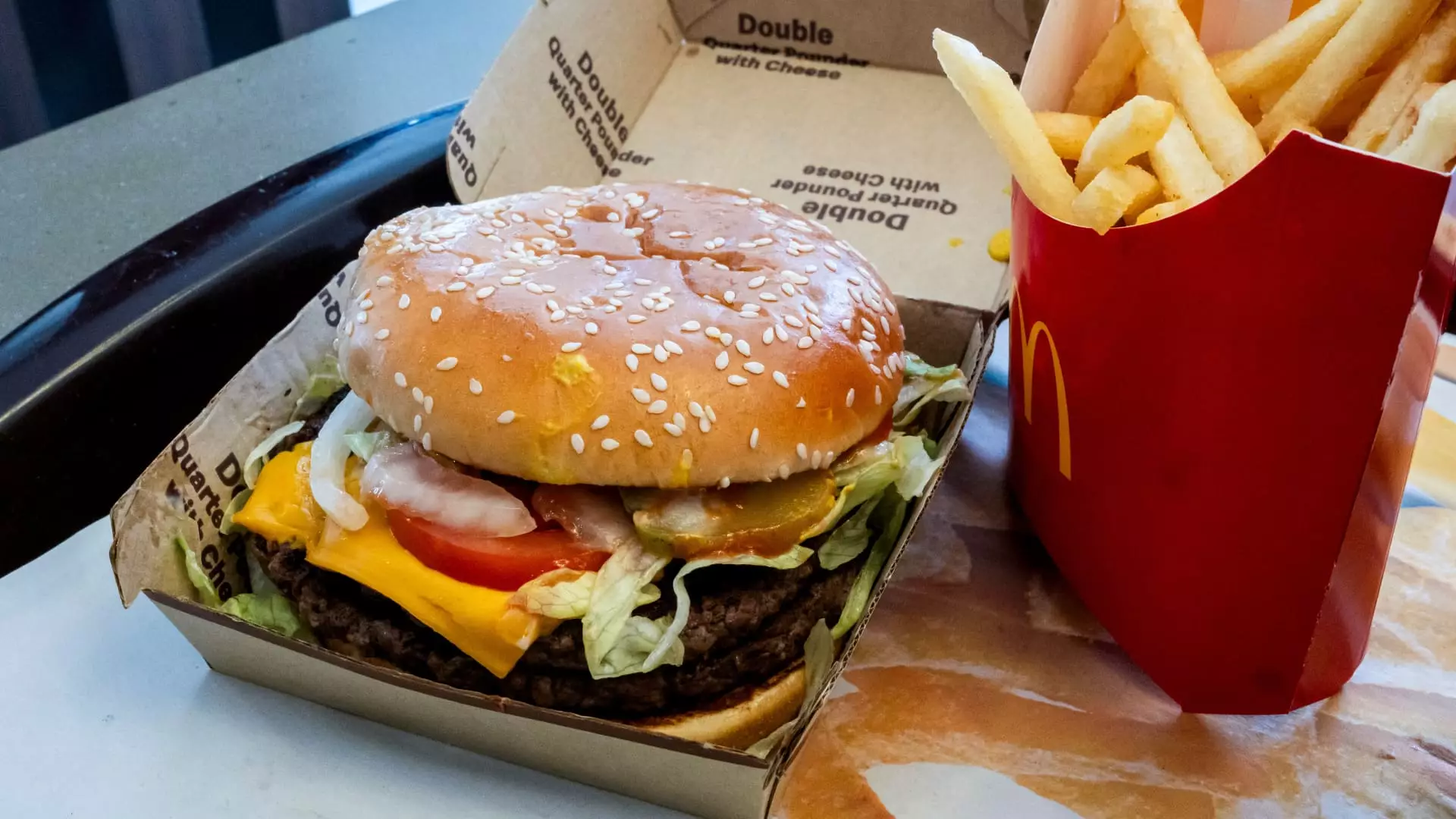In a shocking turn of events, McDonald’s recently announced the gradual return of its Quarter Pounder burger across approximately 900 of its U.S. locations after a brief hiatus prompted by a serious E. coli outbreak. This situation has alarmed both consumers and health officials, particularly since the outbreak has been associated with 75 reported cases across 13 states. It raises significant concerns regarding food safety protocols within fast-food operations, especially for a chain with the notoriety and scale of McDonald’s.
The source of the E. coli contamination has been traced back to slivered onions, which McDonald’s utilized in their Quarter Pounder. Following the outbreak, the fast-food chain prudently pulled the item from its menu and is now taking proactive measures to rectify the situation before fully reinstating it. The ongoing investigation led health authorities to narrow down potential causes, eventually concluding that specific onions from supplier Taylor Farms might be implicated. McDonald’s decision to discontinue sourcing from this supplier indefinitely reflects an essential commitment to customer safety.
In a letter detailing the steps being taken, Cesar Pina, the company’s chief supply chain officer for North America, expressed confidence that the implicated products had been effectively eliminated from their supply chain. Testing conducted by the Colorado Department of Agriculture found no traces of E. coli in other key ingredients like beef patties, quelling some concerns but not all. This public reassurance is crucial for maintaining consumer trust amid significant health scares. McDonald’s is now requiring its beef suppliers to accelerate the production of fresh patties, a sign of the chain’s urgency in regaining customer confidence.
However, while the steps taken by McDonald’s to address the situation and resume Quarter Pounder sales are strategically focused on safety, they also beg the question: how sustainable is the fast-food model under such scrutiny? The outbreak was not just an isolated incident; it highlighted the vulnerabilities and complexities that come with supplying vast amounts of food to numerous locations. Fast-food chains must remain vigilant, not only about the immediate crisis but about ensuring long-term food safety protocols to prevent similar occurrences in the future.
The human toll of this outbreak is not to be overlooked. With reports of severe illness including hospitalization and complications like hemolytic uremic syndrome, the incident serves as a grim reminder of the potential ramifications of foodborne illnesses. It’s particularly disheartening to know that an older adult in Colorado lost their life due to this outbreak. McDonald’s USA President Joe Erlinger acknowledged the distress felt by the community, issuing an apology to those affected. His transparency in addressing the public’s fears reflects a critical facet of corporate responsibility during crises.
Throughout the incident, the Centers for Disease Control and Prevention (CDC) has played a pivotal role, documenting the outbreak timeline and maintaining public awareness. Reports indicate that this outbreak emerged between late September and mid-October, a concise but impactful period that has altered consumer habits. Swift action from stakeholders in public health underscores a collective responsibility toward consumer safety.
As with any major health crisis, the economic ramifications for McDonald’s cannot be ignored. Since the CDC’s announcement linking the outbreak to its restaurants, shares have dropped 7%. Such financial strain could lead to lasting effects on the brand’s image, consumer loyalty, and ultimately its bottom line. McDonald’s is scheduled to report its third-quarter earnings soon, and all eyes will be on the financial outcomes—specifically, how this incident has influenced their sales and operations.
In the midst of crisis, some analysts posit that the recovery journey for McDonald’s might incorporate broader lessons about health regulations, supply chain management, and customer engagement strategies. Transparency, accountability, and a clear communication strategy will be essential not just for restoring its reputation but for setting a precedent for safety in the fast-food industry.
While the return of the Quarter Pounder is a necessary and welcome signal of normalcy for many McDonald’s fans, it is imperative for the company to not just bounce back but to genuinely reflect and act on the lessons learned from this grave incident. Food safety must remain at the forefront, and McDonald’s has the responsibility to lead by example in prioritizing the health and wellbeing of its customers.


Leave a Reply